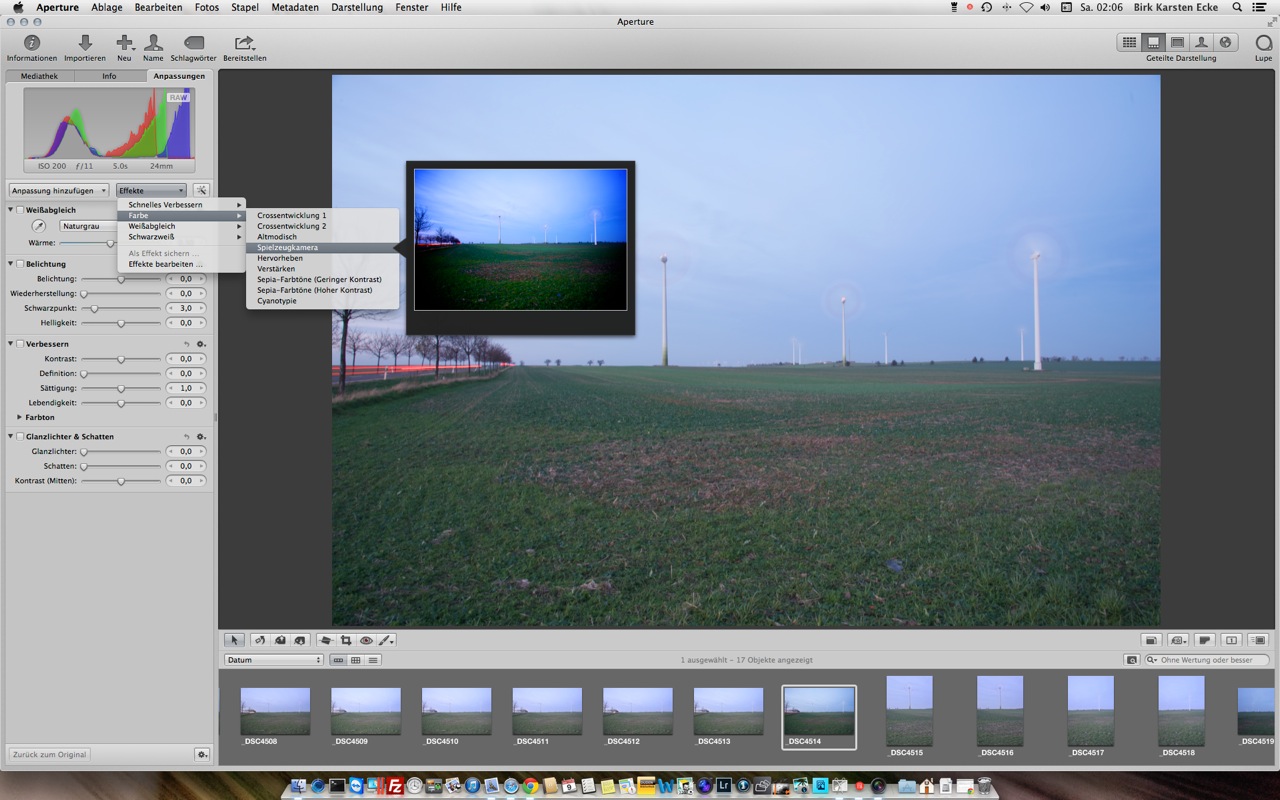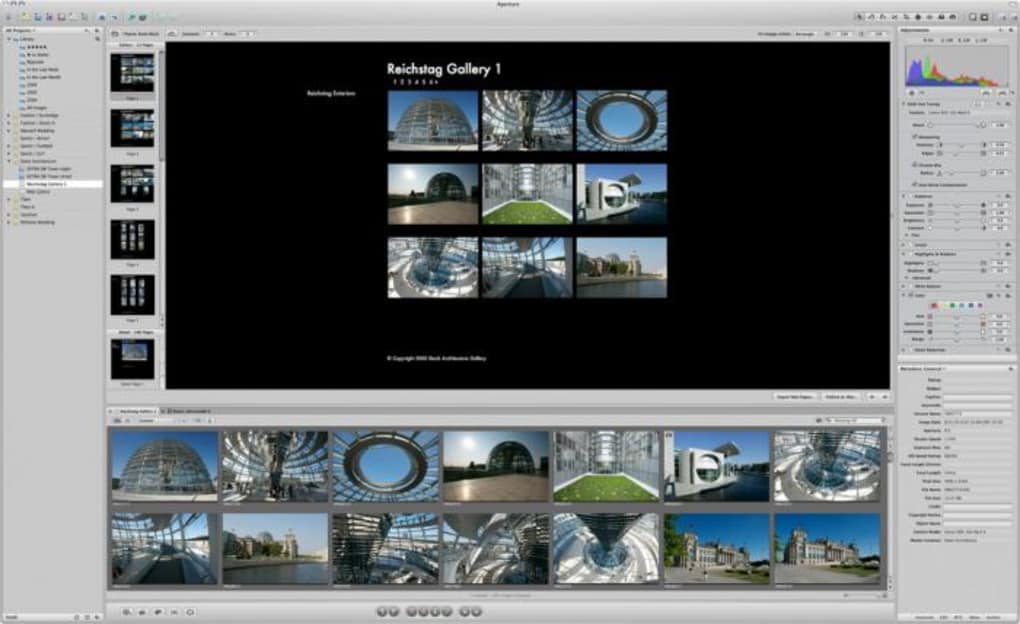Aperture For Mac Os
If you are a serious photographer, and use a mac computer for your photo editing needs, chances are that you are familiar with Apple’s Aperture photo editor. This was Apple’s professional grade RAW photo editor that was discontinued back in 2014. This was sad news for many mac users, as they relied on Aperture’s excellent feature set and photo organization prowess for their day to day photo editing.
However, there are very good alternatives to Apple’s Aperture that can be used on mac systems. Some of these are even better than Aperture, providing ease of use and advanced photo editing tools at a very low price.
Professional digital photo management software to organize, tag, compare and process.
Aperture For Mac Os
1. Luminar

- Apple is ceasing development of its Aperture and iPhoto apps and will replace them both with the previously-announced Photos for OS X app when it ships next year, the company announced Friday.
- Both programs are being replaced by Apple’s upcoming Photos for OS X application, which at this point is still a mystery: Will it incorporate the advanced features of Aperture, will it be a.
- Aperture users that have upgraded to Mac OS 10.5 Leopard should beware when using Time Machine. According to an Apple support document, having Time Machine run a backup while an Aperture.
If you don’t want to pay the monthly subscription fee for Lightroom, the affordable Luminar is a great choice. It comes in a very easy to use package, bringing advanced editing tools to mac users. You can adjust the white balance, colors, exposure, and many more aspects of your image in a very short amount of time. It also lets you make selective adjustments so you can tweak specific portions of your photo to your liking.
Other than these editing tools, Luminar also has many presets that are easy to use and alter. You can work in layers as well, so using multiple presets and textures to get a unique look for your photos is a breeze.
2. Apple Photos
When Aperture and iPhoto were discontinued, Apple created a new software by the name of Photos. This contains features of both Aperture and iPhoto, but still cannot compete with the programs mentioned above. However, for people who used Aperture for basic photo editing and RAW conversions, then Photos should not be underestimated. It has an intuitive design, and can fulfill the needs of beginner and advanced photographers alike. It has RAW editing capabilities as well, so it might be a good replacement for mac users who want something free.

3. Adobe Lightroom
Let’s get the obvious alternative out of the way first. Adobe Lightoom has been on the RAW photo editing scene for a very long time, and for good reason. It is one of the best RAW processors available that is both easy to use and fairly intuitive. Upon opening the program, you are greeted with a series of sliders that can be adjusted to tweak your photo’s exposure, contrast, highlights, noise, sharpening, white balance, and much more. You can use the selective adjustment tools to make changes to certain parts of the image too. Overall, Lightroom is definitely one of the easiest programs to recommend as a direct alternative to Aperture.
4. Capture One Pro

If Lightroom isn’t your thing, then Capture One Pro might just be. It is a direct competitor to Adobe’s software and can be bought for a one-time fee which makes it a better choice for many users. Capture One is known for its great jpeg compression, and many users report that an image imported directly into Capture One showcases better quality than when imported into Lightroom.
Capture One lets you do everything Lightroom does, so it is a matter of personal preference which of these you want to use more.
5. CyberLink PhotoDirector Suite

Another good alternative to Apple’s Aperture is CyberLink’s PhotoDirector 365. It’s a powerful photo editor that includes a RAW processor, optimized portrait retouching features, basic image editing tools, and AI-based tools for automatic adjustments and creative effects. PhotoDirector 365 works with layers, allows you to add text and overlay images, and comes with many built-in presets for quick styling.
Mac Aperture Replacement
Like Apple’s Aperture, PhotoDirector provides photo management with face recognition, photo animation and a few video editing tools, frames and design elements, and a lot of third-party plugins to enhance your creativity. You can use it to apply brushstrokes effects, create slideshows with background music, edit 360-degree pictures, and extract photos from video clips.
6. Picktorial
Picktorial is a complete photo editor for Mac and, as a result, a good alternative for Aperture. It includes digital asset management, RAW processing with a proprietary engine, support for over 500 camera models, and accurate color management, and many photo editing functionalities. Picktorial provides a neat workflow, with all the tools at hand and all your images well-organized. It offers batch processing, comparable editing, and history. Like with Aperture, image organizing features are intuitive and smart. You can rate your images and organize them in albums, edit metadata, and use keywords and saved searches to quickly find what you need.
Among its best photo editing features are selective adjustments using masks, skin smoothing, complex color tools such as color mask, curves, and selective hue, saturation, and luminosity adjustments, object removal, and built-in presets for quick retouches and styling. Adjustments are non-destructive because Picktorial works with layers.
7. Affinity Photo
Affinity Photo is an awarded photo editing solution that can replace Aperture in no time. It’s available for macOS and iOS. Although it doesn’t provide digital asset management, Affinity Photo fully covers all the photo editing aspects from RAW processing to HDR editing, complex selection tools, and a huge library of brushes. It allows you to make subtle adjustments and retouch your photos but also to create artworks using artistic effects and brushwork, get perfect panoramas, and work with hundreds of layers.

All adjustments are non-destructive and you can preview the result at each step. You have tools for finesse adjustments such as skin retouching, blemish removal, sculpting features, and remove unwanted objects. Moreover, Affinity Photo support images larger than 100 Megapixels, offers pan and zoom at 60fps, opens and edits PSD files, and delivers ready-for-print images. It offers so much more than Aperture on the photo editing part.
8. On1 Photo Raw
If you’re looking to replace Aperture with a professional photo editor, ON1 Photo RAW 2020 is a complete solution you can trust. It provides everything you need, from image organizing features to RAW processing, AI-powered features for smart automatic adjustments, special effects, and SmugMug integration. ON1 Photo RAW 2020 isn’t a cheap investment but it delivers professional high-quality images, ready for print.
While it may seem too complex for beginners, ON1 Photo RAW 2020 also includes basic photo editing features such as color and tone adjustments and tools for fixing exposure, white balance, and contrast. In addition, it comes with hundreds of built-in presets, the AI Quick Mask Tool that automatically creates a mask for your subject, an edge detecting brush, and the AI Auto Tone that automatically adjust color and tone. So you have tools for fast, auto edits, and tools for finesse photo retouching and creative edits.
9. Raw Power
RAW Power 3.0 is a photo editor designed for macOS and iOS. It’s easy, fun, and completely dedicated to Apple users. As a result, you should consider it an Aperture alternative. RAW Power 3.0 offers exquisite image organizing functionality. Like Aperture, RAW Power allows you to keep your photos at hand and find what you need in seconds. It works with Photos library, supports iCloud Photos, and allows you to rate photos and work with multiple folders at the same time.
In terms of image editing features, RAW Power follows Aperture’s steps: RAW processing using Apple RAW, automatic enhancements for quick edits, tools for basic adjustments and tools for advanced edits, batch processing, and presets.
10. Core Image
Core Image is designed for real-time processing of images and videos. It isn’t an editor per se but an API that allows you to develop your own image editor. It provides hundreds of built-in filters, face detection, automatic image enhancement, and effects and you can mix them and create custom filters and tools. It runs on macOS and iOS and requires programming knowledge. Core Image is an alternative for Aperture only if you want something impossible to find in other editors and decide to develop it yourself.
